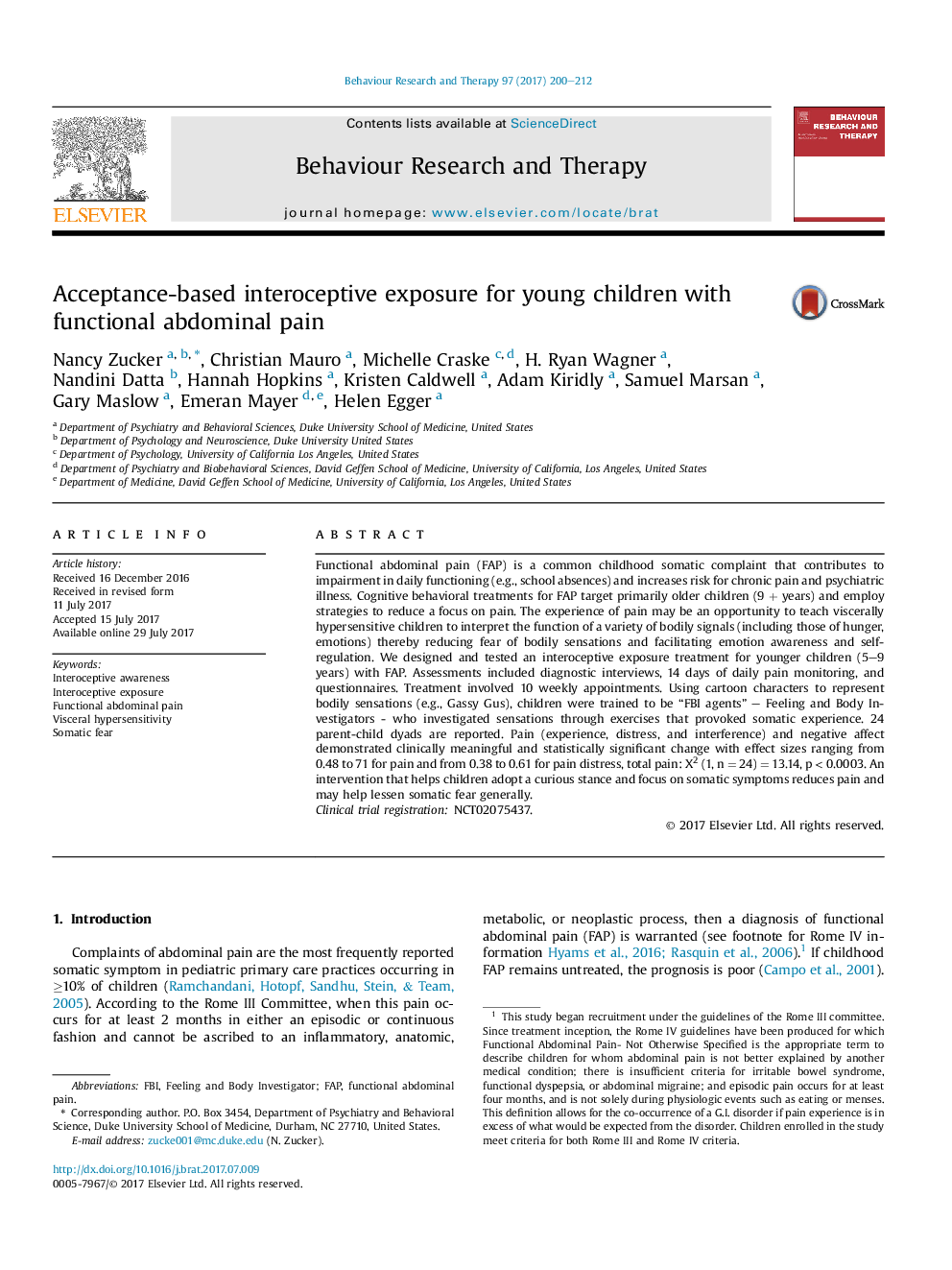| کد مقاله | کد نشریه | سال انتشار | مقاله انگلیسی | نسخه تمام متن |
|---|---|---|---|---|
| 5038170 | 1472752 | 2017 | 13 صفحه PDF | دانلود رایگان |

- We pilot an acceptance-based interoceptive exposure treatment for children with abdominal pain.
- Young children are first learning to discriminate the meaning of bodily sensations.
- Children learn to focus on and decode somatic signals, a departure from CBT treatments that divert attention from pain.
- Results demonstrate medium to large effect sizes on intervention outcomes.
Functional abdominal pain (FAP) is a common childhood somatic complaint that contributes to impairment in daily functioning (e.g., school absences) and increases risk for chronic pain and psychiatric illness. Cognitive behavioral treatments for FAP target primarily older children (9 + years) and employ strategies to reduce a focus on pain. The experience of pain may be an opportunity to teach viscerally hypersensitive children to interpret the function of a variety of bodily signals (including those of hunger, emotions) thereby reducing fear of bodily sensations and facilitating emotion awareness and self-regulation. We designed and tested an interoceptive exposure treatment for younger children (5-9 years) with FAP. Assessments included diagnostic interviews, 14 days of daily pain monitoring, and questionnaires. Treatment involved 10 weekly appointments. Using cartoon characters to represent bodily sensations (e.g., Gassy Gus), children were trained to be “FBI agents” - Feeling and Body Investigators - who investigated sensations through exercises that provoked somatic experience. 24 parent-child dyads are reported. Pain (experience, distress, and interference) and negative affect demonstrated clinically meaningful and statistically significant change with effect sizes ranging from 0.48 to 71 for pain and from 0.38 to 0.61 for pain distress, total pain: X2 (1, n = 24) = 13.14, p < 0.0003. An intervention that helps children adopt a curious stance and focus on somatic symptoms reduces pain and may help lessen somatic fear generally.Clinical trial registrationNCT02075437.
469
Journal: Behaviour Research and Therapy - Volume 97, October 2017, Pages 200-212